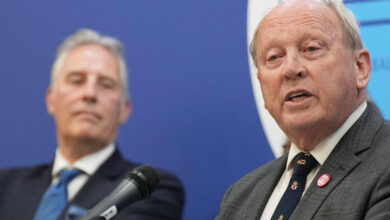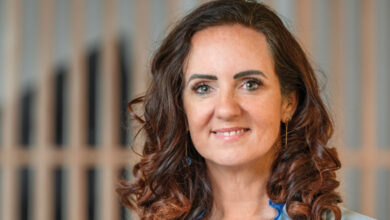Keeping the lights on
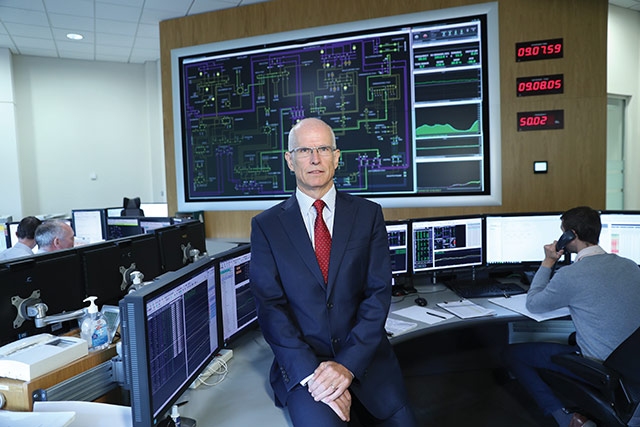
SONI General Manager Robin McCormick talks to Owen McQuade about the importance of building the North South Interconnector project to ensure a secure and affordable power supply for homes and businesses in Northern Ireland.
Robin McCormick heads up SONI (System Operator Northern Ireland) which manages the Northern Ireland electricity transmission system. The sector has undergone significant change over the past decade with the development of a competitive all-island electricity market and unprecedented levels of renewable energy on the system, mostly onshore wind. Reflecting on where the electricity system is in 2016, McCormick says that the North South Interconnector is very much top of the list of issues facing the industry. The new interconnector is currently in planning on both sides of the border. The oral hearings are now complete in the south and it is expected that the public inquiry will start in the north at the end of this year or early next year.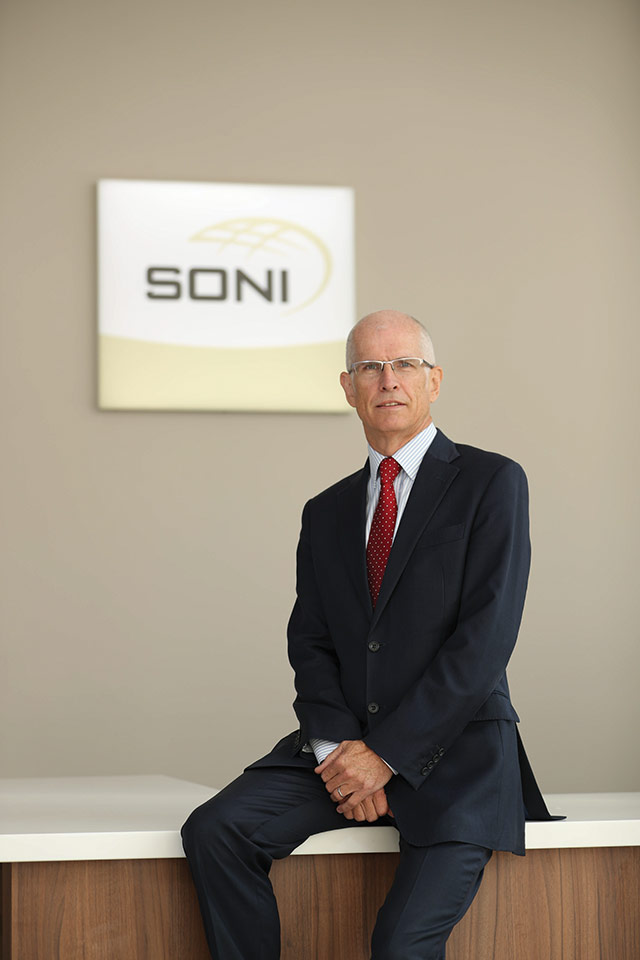
Before dealing with the interconnector project in detail, McCormick highlights a number of other changes that have made 2016 a particularly busy year for the system operator. There has been “an avalanche” of grid connection requests since the Department for the Economy announced the closure of the Renewables Obligation Certificates (ROC) scheme, the support mechanism for renewable energy in Northern Ireland. At the same time the Utility Regulator removed the requirement of having planning permission before applying for a grid connection. This led to a huge number of requests for grid connections. “The main difficulty we had was that we couldn’t ascertain if all those requests are serious or if they are speculative in nature,” says McCormick. The requests totalled 900MW of capacity above the requests that had already been dealt with – which would have already met Northern Ireland’s renewable energy targets for 2020. “We already knew what reinforcement was needed on the transmission system to meet the 2020 targets and we were then suddenly faced with the prospect of an additional 900MW of connection requests ranging from very small scale wind and solar projects to significant transmission-scale projects,” explains McCormick. To deal with these additional requests would have taken five years under the existing processes. SONI and NIE Networks reviewed the connection bid process with a view to dealing with the connections as a batch in the context of the time constraint of the ROC scheme closing. “We looked at what was pragmatic given the timescale and we believe we can connect 200MW but at specified locations,” says McCormick. Rather than deal with each individual connection in sequence and in isolation, SONI and NIE Networks looked at the network as it would be at the end of 2017 and looked at what could practically be connected to that system. Certain assumptions were made as to the generation mix and there was an allowance for some overcapacity in the connections. For example, with a connection of 5MW they allowed more capacity behind that connection up to 120 per cent but NIE Networks is only committing to allowing 5MW onto the system. This is useful in co-locating different technologies, such as wind and solar which will have differing output profiles.
Another major change has been the introduction of contestability for grid connections. Any customer who wants to connect to the grid now has the option of doing the construction work themselves, although it needs to be done in a manner that meets the requirements of NIE Networks as the transmission grid owner and SONI as the system operator. “If the customer can do the construction themselves then they’re now free to do so. This is up and running for the distribution system and the final touches are being put in place for contestability at the transmission level,” he adds.
North South Interconnector
The North South Interconnector has been talked about within the industry for several years now. Like many large infrastructure projects, it has had a somewhat chequered history. Since 2012, SONI has been highlighting how critical this piece of infrastructure is. “We are now heading towards a time when Northern Ireland will face major consequences if we don’t have it. The seriousness of the situation became even more apparent when we produced this year’s annual generation capacity statement, which looks ahead 7 to 10 years. It became clear, in black and white. While there will be enough generation capacity on the island as a whole, in the future ageing generating units will have to be retired at Ballylumford and Kilroot, which leaves us with a significant shortfall. Without the North South Interconnector in place we would be in a position where Northern Ireland would be below the minimum security of supply standards – that’s a well-established measure of how much generating capacity we need,” warns McCormick.
 In addition, in Northern Ireland the generating units are large compared to the size of demand on the system, and therefore if a unit is offline, such as Coolkeeragh for an extended time, that has a disproportionate impact. “As the system operator I can’t stand up and speak confidently about keeping the lights on beyond 2020. After 2020, I have concerns about not having enough generation capacity for all reasonable scenarios. We are now at a critical juncture in the planning process and everything now needs to happen in a timely manner from here on in if we are to build the interconnector to meet the needs of Northern Ireland,” emphasises McCormick.
In addition, in Northern Ireland the generating units are large compared to the size of demand on the system, and therefore if a unit is offline, such as Coolkeeragh for an extended time, that has a disproportionate impact. “As the system operator I can’t stand up and speak confidently about keeping the lights on beyond 2020. After 2020, I have concerns about not having enough generation capacity for all reasonable scenarios. We are now at a critical juncture in the planning process and everything now needs to happen in a timely manner from here on in if we are to build the interconnector to meet the needs of Northern Ireland,” emphasises McCormick.
Although much of the focus is on the security of supply issue in the future, consumers are spending more money on electricity because of the delay. The cost is estimated at approximately £20 million a year, due to the restriction in flow between north and south which means the Single Electricity Market (SEM) is not functioning as it was designed to. That cost will continue until the interconnector is built. The Department for the Economy and the Utility Regulator have stepped in to secure some generation capacity at AES Ballylumford that would have otherwise have been retired and that is costing customers another £8 million per year. Additionally, there has been some uncertainty around the length of time it has taken for the repair of the Moyle interconnector with Scotland. “We need the construction to start soon,” says McCormick.
SONI has been working with business organisations to highlight the need for the North South Interconnector in terms of security of supply and wants to avoid any uncertainty around the quality and reliability of electricity supply for inward investors, “that is an important aspect of any business decision.”
The interconnector will also help meet the challenge of increased renewables on the system in line with the 2020 target. Until now the market response has largely been with onshore wind. It has been a significant challenge to operate the system with such high levels of wind on the system – Ireland is truly leading the way globally on this. The North South Interconnector is needed to ensure everyone gets the benefits of the increased wind generation.
“In summary, the interconnector is critical for increased competitiveness; to meet the renewables targets; to get the benefits from renewables; and to ensure a secure supply,” explains McCormick. To get this message across SONI has engaged with a wide range of stakeholders including local businesses, the new councils and all the political parties. It has also employed an agricultural liaison officer who meets with land owners and the local community.
When asked about the possibility of undergrounding the interconnector McCormick says that it is a technical answer, which he acknowledges can be difficult to communicate. Electricity on the island is an alternating current (AC) and the maximum length an AC cable can be undergrounded is 10 km. With 400km in length the interconnector would have to have large substations every 10km to compensate for voltage losses and that would be impractical and uneconomic. There is an option of converting the AC current to direct current (DC) as the Scottish interconnector does. This would require a large “warehouse” to convert the AC to DC and another to convert it back again but you would effectively split the system into two. It would not be possible to connect into the line without building another converter station. “With the DC link you would effectively have a small system in Northern Ireland and a larger system in the Republic and that would negate all the progress made in facilitating higher levels of wind on to the system. It would effectively break the system into two parts which would be less efficient and more costly to run.” In addition, there would be a trench the width of a dual carriage way to put the cables into the ground and a zone that would have to be sterile with no development. Importantly, any fault in an underground cable is extremely difficult to find and repair. Undergrounding is also much more expensive, costing at least three times as much as conventional overhead lines and this is a cost which would ultimately be borne by the consumer.
Critical infrastructure
Robin McCormick is very clear as to the importance of the project: “The North South Interconnector is the single most important energy infrastructure project on the island today. The consequences of not going ahead are costly and Northern Ireland customers would suffer. The electricity market would not operate efficiently and a solution would have to be found for the generation shortfall in Northern Ireland. Without access to a market that functions across the island there is no incentive for a generator to invest and therefore any solution would be in an out-of-market context which would inevitably lead to increased costs to customers. We want to avoid that and more importantly, we want to keep the lights on and all the benefits that brings to normal everyday life for businesses and homes.”
Profile: Robin McCormick
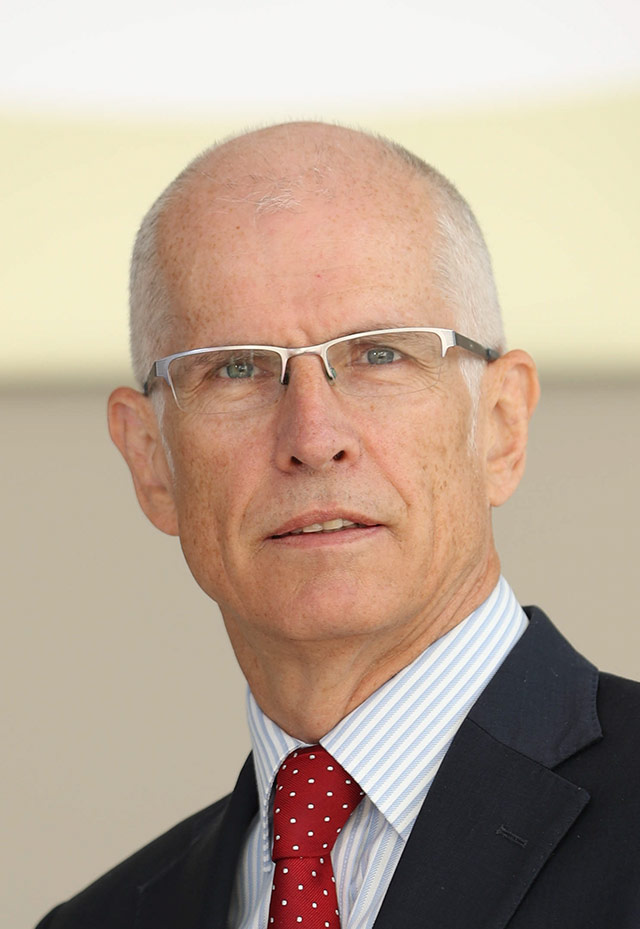 Robin started in NIE when it was a public sector organisation with a public sector ethos and experienced the transformation of the industry with privatisation in the 1990s. He came back into the transmission system operations role on 1 April 2002, the same day as the Moyle interconnector went into commercial operation and oversaw the transformation of generation with the introduction of combined cycle gas turbines at Coolkeeragh and Ballylumford.
Robin started in NIE when it was a public sector organisation with a public sector ethos and experienced the transformation of the industry with privatisation in the 1990s. He came back into the transmission system operations role on 1 April 2002, the same day as the Moyle interconnector went into commercial operation and oversaw the transformation of generation with the introduction of combined cycle gas turbines at Coolkeeragh and Ballylumford.
Robin was heavily involved in the Single Electricity Market – “a transformational project for the industry” – from its inception. SONI was subsequently acquired by EirGrid in order to focus on the consumer and optimising the running of the grid across the island. His main interest outside work is running and he will soon complete the Great North Run in Newcastle upon Tyne – the world’s largest half-marathon.

